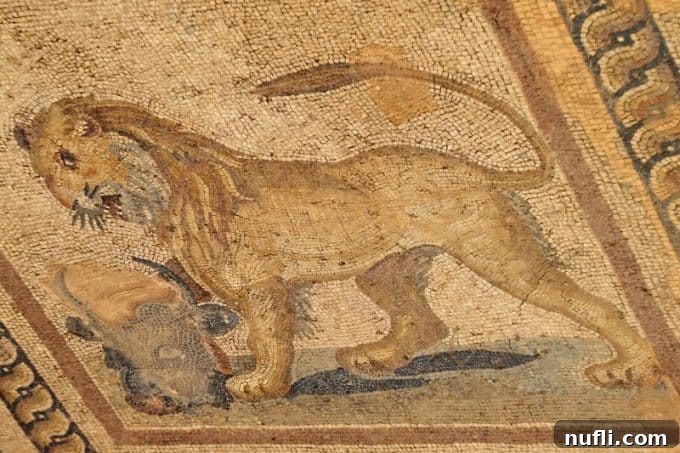Nestled within the ancient city of Ephesus, a jewel of Roman architectural and social sophistication awaits discovery: the magnificent Terracotta Houses. Often referred to as the “Houses of the Rich” or “Slope Houses,” these residential complexes offer an unparalleled glimpse into the luxurious lives of Ephesus’s elite citizens during the Roman era. Our previous visits to Ephesus, a highlight of our Mediterranean cruises, have always left us enchanted, and each return journey deepens our appreciation for this profoundly historic site. The Terracotta Houses, in particular, stand out as a testament to ancient ingenuity and opulent living, making them an unmissable stop for any traveler.
It’s truly astonishing to wander through these remarkably preserved structures, envisioning a bustling life that began as early as the 1st century BC. Though initially built then, many of the houses underwent extensive reconstruction and renovation in the 2nd century AD, showcasing an evolving architectural prowess. What makes these dwellings particularly astounding are the innovations they boasted, including sophisticated plumbing systems that delivered both hot and cold running water – a luxury many modern homes didn’t possess until centuries later. This level of comfort and technological advancement truly sets the Terracotta Houses apart, painting a vivid picture of a civilization far more advanced than many often imagine.
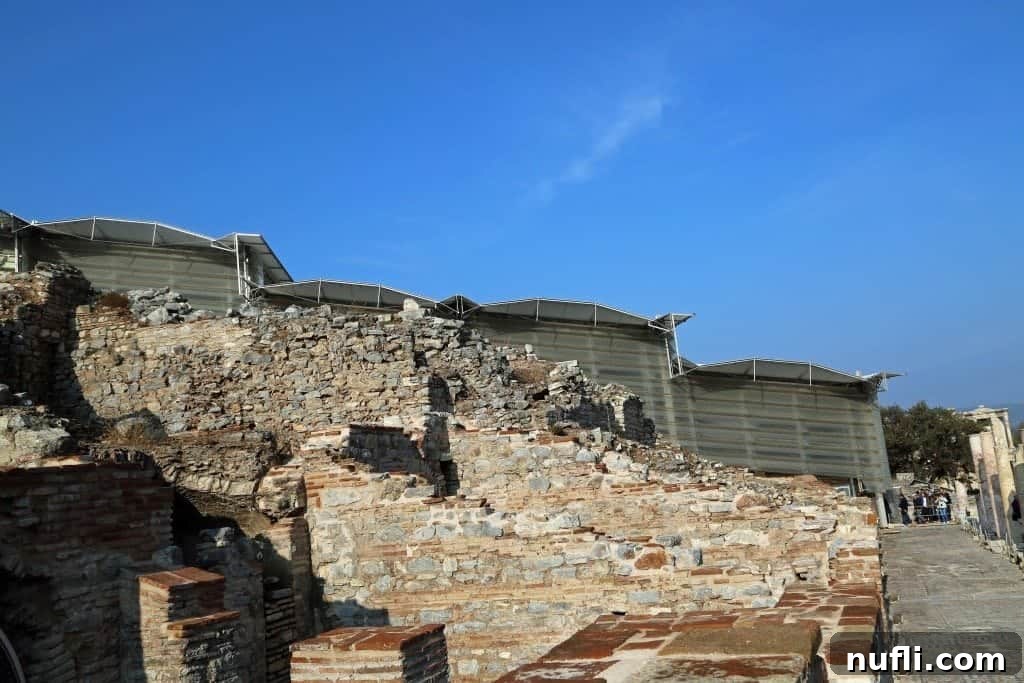
Short on Time? Here are My Top Finds for Your Ephesus Adventure:
🏨Book Hotels and Vacation Rentals Near Ephesus
📍Discover Ephesus Tours and Excursions
Exploring the Ancient Terracotta Houses of Ephesus, Turkey
Today, the Terracotta Houses are safeguarded by an impressive modern viewing cover, a crucial measure to shield these delicate ruins from the relentless Turkish sun, strong winds, and other environmental elements that could accelerate their decay. This protective structure not only ensures the longevity of the site but also provides a comfortable and well-lit environment for visitors to explore the intricate details of ancient Roman life. Whether you arrive as part of a cruise ship excursion or as an independent traveler, accessing the Terracotta Houses is straightforward, with tour tickets readily available on-site at the main entrance of the Ephesus archaeological park.
The experience of walking through these houses is truly unique. Elevated glass walkways allow visitors to peer directly into the excavated rooms, offering an intimate perspective without disturbing the fragile historical layers below. This innovative approach allows you to witness the ongoing, meticulous work of archaeologists and researchers who are tirelessly piecing together the past. It truly resembles a gigantic, three-dimensional jigsaw puzzle, with countless fragments of clay, stone, plaster, and mosaic waiting to be identified, cataloged, and painstakingly restored. The dedication required for this task is immense, with literally thousands upon thousands of material pieces being carefully examined within the Terracotta Houses.
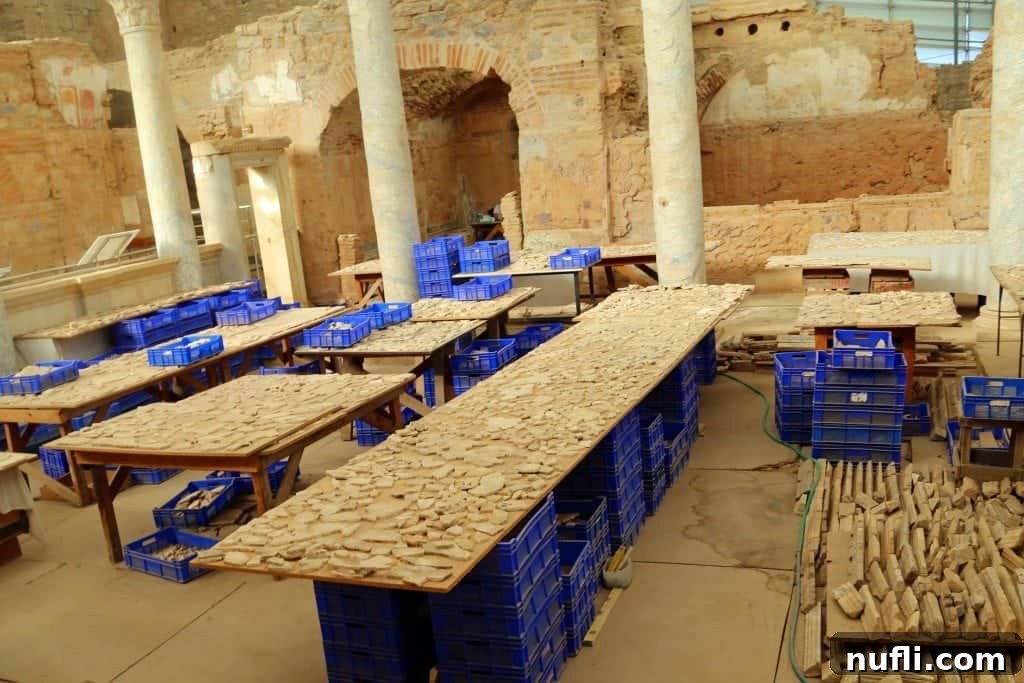
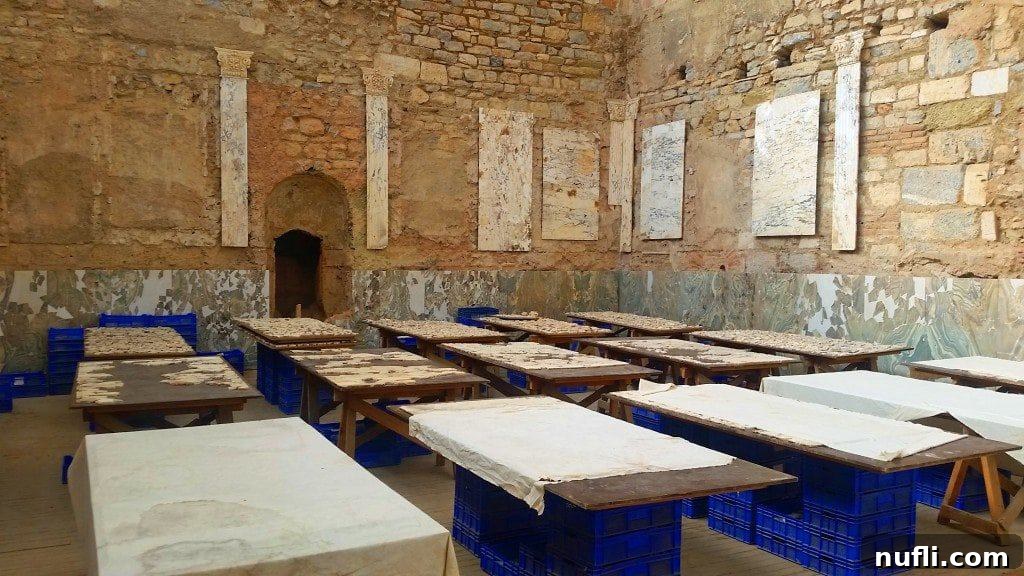
For those eager to delve deeper into the wonders of this ancient city, a wide array of Ephesus tours are available, many of which include the Terracotta Houses as a highlight. These tours often provide expert guides who can enrich your visit with detailed historical context and fascinating anecdotes.
The Terracotta Houses of Ephesus are strategically situated on the slopes of Bulbul Mountain, directly opposite the iconic Hadrian’s Temple. This prime location was no accident; these residences were exclusively for the wealthiest and most influential citizens of Ephesus, including high-ranking officials, merchants, and landowners. Their homes were not merely functional but were designed as statements of wealth and status. Evidence of this luxury is abundant, from the remnants of intricate, hand-painted wall decorations—known as frescoes—that adorned their living spaces, to the breathtakingly elaborate mosaic floors that served as the ancient equivalent of opulent rugs, seamlessly integrated into the very structure of the houses.
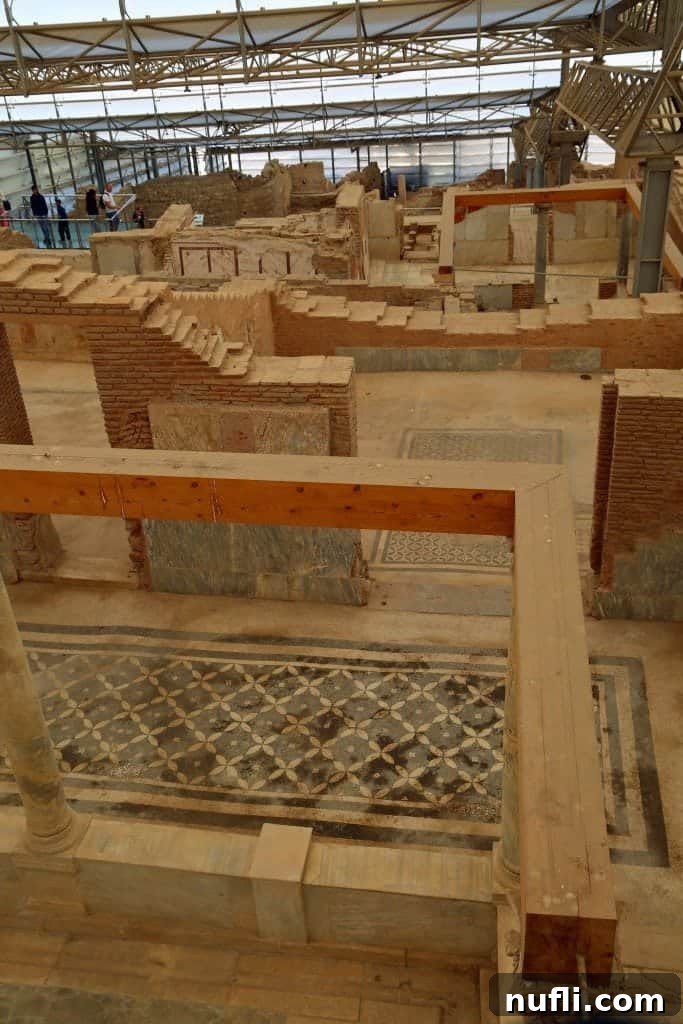
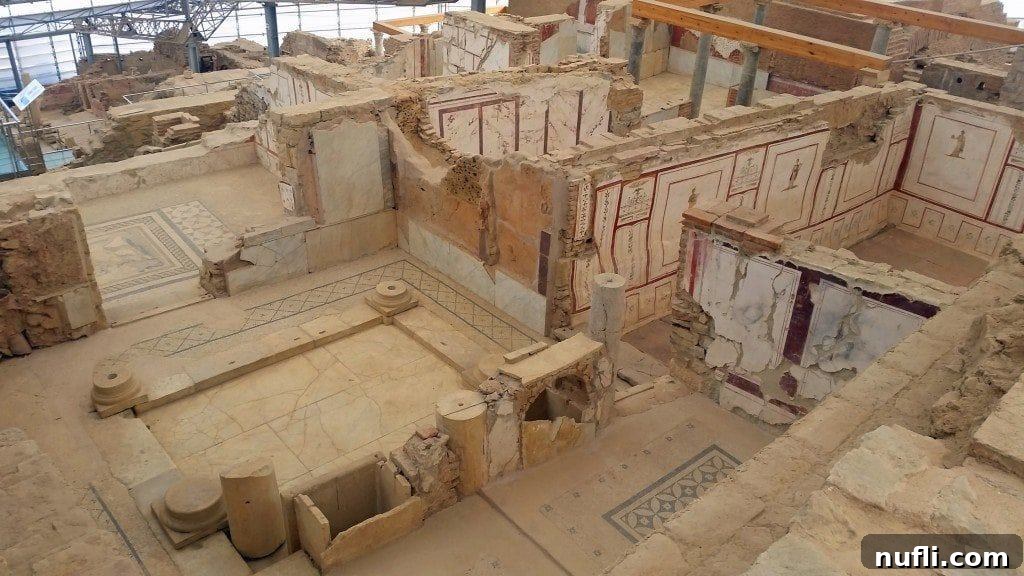
These multi-level homes, often spanning three stories, were masterpieces of Roman engineering and comfort. As our guide enthusiastically explained, the advanced plumbing systems that supplied hot and cold water to various rooms, including private baths, were remarkably durable. It’s a testament to their construction that many of the original clay pipes found within the houses could, astonishingly, still hold water without leaking today. Imagine the sheer luxury of having readily available running water, heated for baths, at a time when most of the world relied on drawing water from wells and rivers.
Beyond plumbing, the houses featured sophisticated heating systems, often utilizing hypocausts (underfloor heating) similar to those found in Roman public baths. The architectural layout typically revolved around a central peristyle courtyard, providing light, ventilation, and a private outdoor space for the household. Surrounding this courtyard were various rooms: living quarters, dining areas (triclinia), private studies, and sometimes even small workshops. The scale and complexity of these residences truly underscore the affluence and sophisticated urban planning prevalent in Ephesus during its golden age.
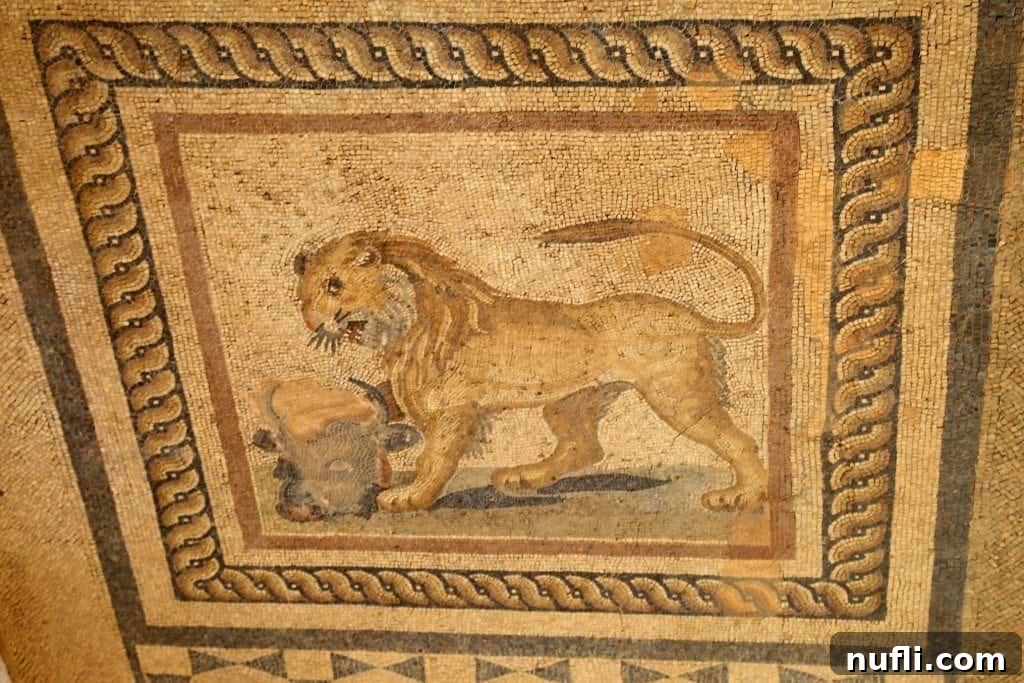
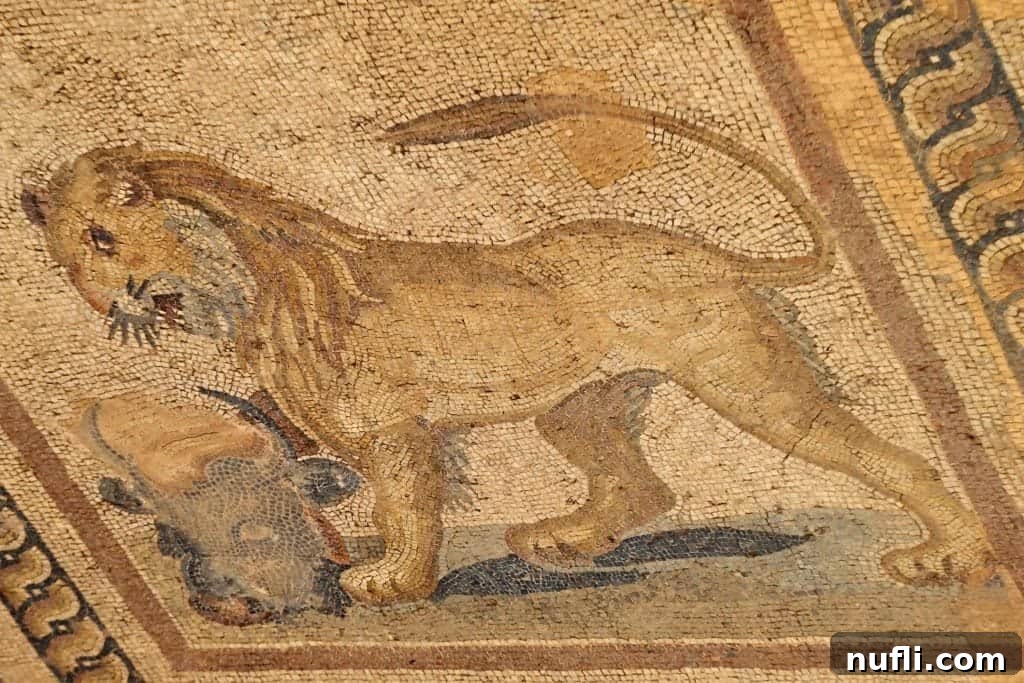
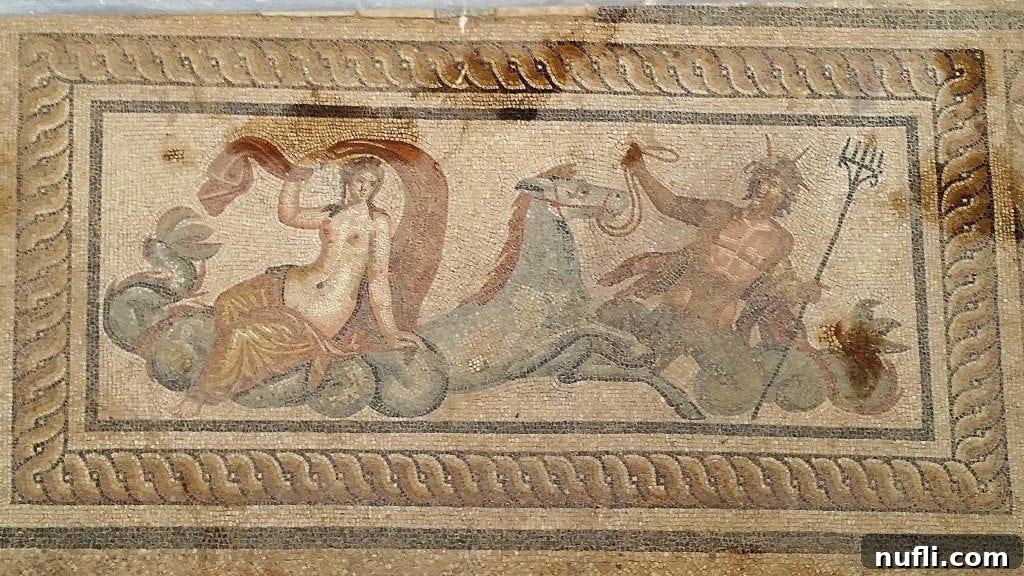
For me, the mosaic floors were an absolute highlight of the entire visit. The sheer artistry and precision involved in creating these intricate designs thousands of years ago are utterly captivating. Walking above them, one can marvel at the vibrant colors and complex patterns—mythological scenes, geometric motifs, and representations of daily life—all meticulously crafted from tiny tesserae (small pieces of stone, glass, or ceramic). These mosaics not only served as decorative elements but also spoke volumes about the cultural influences and artistic preferences of their wealthy owners. The famous lion mosaic, for instance, is a testament to the skill of the artisans and the enduring beauty of Roman art.
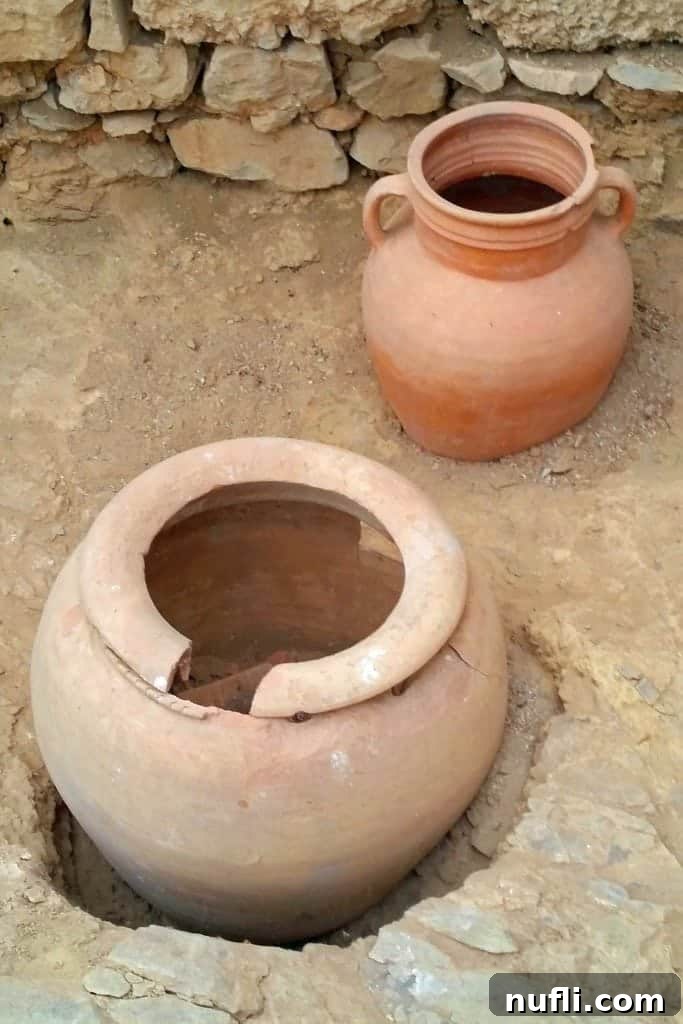

Essential Travel Tips for Visiting the Terracotta Houses in Ephesus
Planning your visit to the Terracotta Houses requires a few considerations to ensure a smooth and enjoyable experience. If you are arriving via a cruise ship, be aware that cruise excursions to Ephesus often present various tour options. The Terracotta Houses are typically a distinct add-on or a separate tour from the main Ephesus site. You might have to choose between visiting the Terracotta Houses or other significant sites like the House of the Virgin Mary, depending on your cruise line’s offerings. Always check your itinerary carefully.
Accessing the three levels of the Terracotta Houses involves navigating stairs within the protective cover. While generally manageable, the pathways and steps leading down from the houses, as well as those throughout the broader Ephesus site, are uneven and can be challenging for individuals with significant mobility restrictions. The modern glass walkways within the Terracotta Houses themselves are flat and stable, but the surrounding ancient pathways outside are certainly not. Sturdy, comfortable walking shoes with good grip are highly recommended, especially since the ancient marble and stone can become extremely slippery if it rains.
For independent travelers, tickets to view the Terracotta Houses can be purchased directly at the main entrance to the Ephesus archaeological site. It is advisable to buy a combined ticket that includes both the general Ephesus entrance and the Terracotta Houses to save time and sometimes money. Consider arriving early in the morning or later in the afternoon to avoid the largest crowds and the peak midday heat.
Ephesus, being an open-air archaeological site, offers very little natural shade. Given the intense Mediterranean sun, especially during the warmer months, it is absolutely crucial to come prepared. Bring a wide-brimmed hat, sunglasses, and apply a high-SPF sunscreen liberally. Carrying a reusable water bottle is also highly recommended to stay hydrated throughout your exploration. Many visitors find it helpful to bring a small backpack for essentials like snacks, extra water, and a camera to capture the breathtaking ruins.
Respect for the historical site is paramount. Avoid touching the ancient walls, frescoes, or any artifacts. Stay on designated pathways and follow any instructions from guides or signage to help preserve these irreplaceable treasures for future generations.
Further Mediterranean Cruise & Travel Articles to Inspire Your Journey
Delve deeper into the magic of the Mediterranean with these guides:
The Charming Cats of Greece and the Mediterranean
Your Epic Guide to Experiencing Sunset in Oia, Santorini
Essential Athens, Greece Travel Tips for First-Timers
Visiting Mykonos by Cruise Ship: A Practical Guide
Explore St. John’s Monastery and the Cave of the Apocalypse in Patmos, Greece
Don’t miss our comprehensive collection of Mediterranean Cruise Guides for more travel inspiration and planning advice.
